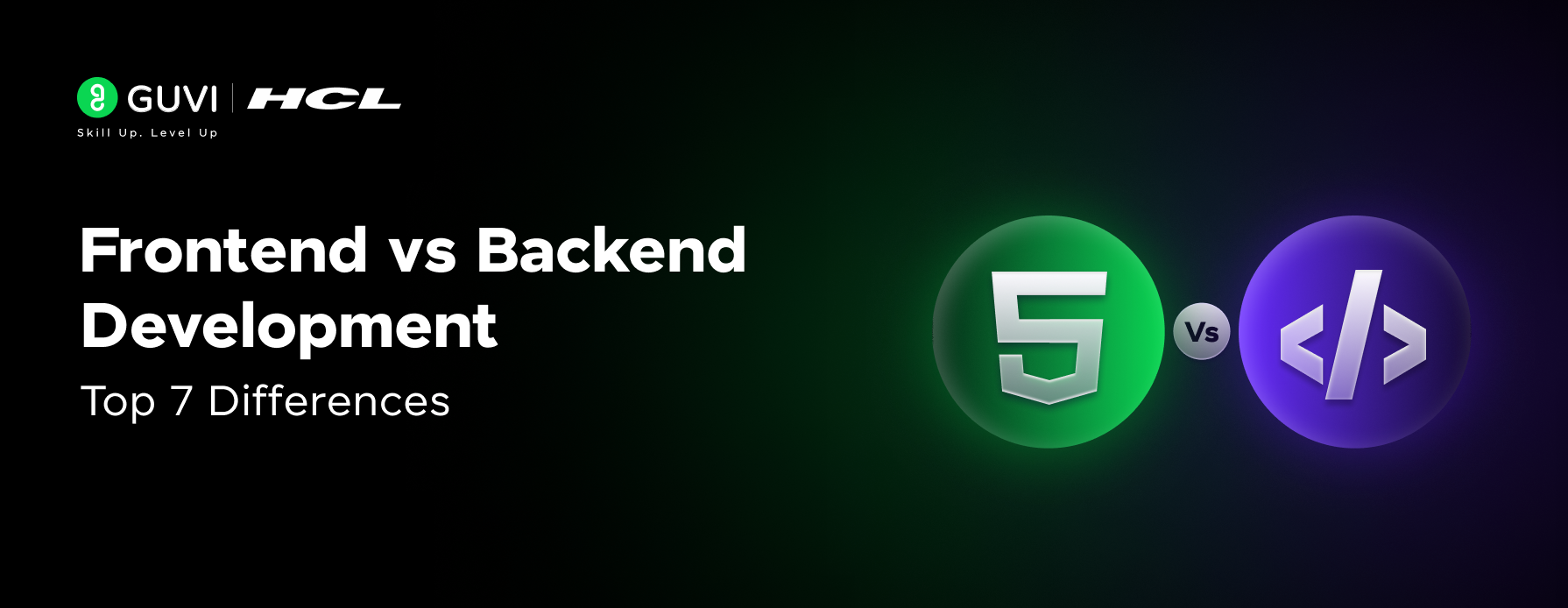
Frontend vs Backend Development: Top 7 Differences
Mar 17, 2025 4 Min Read 4238 Views
(Last Updated)
In today’s digital age, full-stack development has become a crucial component of the IT industry. If you are starting out as a developer, you may often come across the terms “frontend” and “backend” while exploring the world of full-stack development.
These two pillars play distinct roles in creating functional and visually appealing websites or applications. But what are those? What is the difference between them? This article holds answers to those questions.
In this article, we will delve into the differences as we go about frontend vs backend development, understand their respective features, explore the technologies involved, and shed light on the fascinating world of full-stack web development.
Table of contents
- Getting Into It...
- What is Frontend?
- Features of Frontend Development
- What is Backend?
- Features of Backend Development
- Technologies Involved in Web Development
- 1) Front End Development Languages
- 2) Front End Frameworks
- 1) Back End Development Languages
- 2) Back End Frameworks
- Frontend vs Backend
- Full Stack Web Development
- Takeaways...
- What is the difference between frontend and backend developers?
- What a backend developer should know?
- Which pays more front end or backend?
- Is SQL a backend language?
Getting Into It…
As users, we often interact with websites and applications without giving much thought to the underlying complexities. However, web development involves a meticulous process of building the frontend and backend components that together create a seamless user experience.

The frontend refers to the visible and interactive elements of a website, while the backend encompasses the behind-the-scenes functionality that powers the frontend. Let’s dive deeper into these two vital aspects of web development.
What is Frontend?
Frontend development focuses on creating the user interface and user experience components that users directly interact with. It involves transforming design elements into functional web pages using programming languages such as HTML, CSS, and JavaScript.

Frontend developers work closely with UX/UI designers to bring their designs to life and ensure a visually appealing and intuitive user experience.
The role of a frontend developer extends beyond aesthetics. They are responsible for implementing the architecture of the website, deciding on the CSS process, organizing files and directories, and setting up build tools.
Frontend developers utilize frameworks like React, Angular, Vue.js, and jQuery to enhance the performance and interactivity of the website. They also play a crucial role in optimizing the front end for fast loading and responsiveness.
Features of Frontend Development
The frontend comes with a range of features that contribute to the overall user experience. Some key features include:
- Client-Side Rendering: Frontend developers can render the entire website on the user’s browser using JavaScript, providing a seamless and interactive experience.
- Server-Side Rendering: This approach enables the rendering of sites directly on the user’s browser based on requested changes, ensuring an up-to-date and dynamic interface.
- Optimization: Frontend developers fine-tune HTML, CSS, and JavaScript to ensure fast loading and smooth performance for users.
Before we move to the next section, if you want to know more about frontend and backend development, consider enrolling for a professionally certified online full-stack development course by a recognized institution that can also offer you an industry-grade certificate that boosts your resume.
What is Backend?
While the frontend focuses on the visible aspects of a website, the backend handles the behind-the-scenes functionality. Backend developers work on the server-side code, which processes user requests, interacts with databases, and delivers the necessary data to the frontend.

They ensure the smooth functioning of the website by handling tasks such as server management, database integration, and security.
Backend development involves working with languages like Python, Java, Ruby, and PHP. These languages enable developers to create the logic and calculations necessary for the website’s functionality.
Backend developers also utilize frameworks like Django, Flask, Ruby on Rails, and Laravel to streamline the development process and ensure efficient backend operations.
Also Explore: Top 9 Web Development Tools
Features of Backend Development
While the frontend focuses on the user interface, the backend handles important behind-the-scenes functionalities. Here are some key features of backend development:
- Databases: Backend developers work with databases to store and manage essential user data.
- Website Architecture: They design and implement the architecture of the website, ensuring it aligns with the project’s goals and objectives.
- Scripting: Backend developers handle the scripting necessary for the proper functioning of the website.
- API: Application Programming Interfaces (APIs) facilitate communication between different software systems and enable the seamless exchange of data.
Also Read: Backend Developers: Roles, Responsibilities, Skills, and Salary
Technologies Involved in Web Development
Web development involves a wide range of technologies. Let’s explore the languages and frameworks commonly used in frontend and backend development.
1) Front End Development Languages
Frontend developers primarily work with the following languages:

- HTML: HyperText Markup Language provides the basic structure and layout for web pages.
- CSS: Cascading Style Sheets handle the visual aspects of a website, including layout, colors, and fonts.
- JavaScript: JavaScript adds interactivity and dynamic functionality to websites, allowing developers to create responsive and interactive elements.
Must Read: What does a Front End Developer do? A Complete Guide
2) Front End Frameworks
Frontend developers often utilize frameworks to streamline the development process and enhance the functionality of web applications. Some popular frameworks include:
- React: React is a JavaScript library maintained by Facebook. It allows developers to build user interfaces with reusable components and efficient rendering.
- Angular: Angular is a TypeScript-based open-source web application framework maintained by Google. It provides a comprehensive set of tools for building scalable and robust web applications.
- Vue.js: Vue.js is a progressive JavaScript framework that allows developers to build user interfaces and single-page applications efficiently.
Find Out 10 Best Frontend Development Frameworks
1) Back End Development Languages
Backend developers work with different languages, depending on their preferences and project requirements. Some commonly used languages include:
- Python: Python is a versatile programming language known for its simplicity and readability. It offers a vast collection of libraries and frameworks for backend development.
- Java: Java is a widely used object-oriented programming language known for its platform independence and scalability. It is commonly used for building enterprise-level applications.
- Ruby: Ruby is a dynamic, open-source programming language known for its simplicity and productivity. It offers a clean and elegant syntax, making it a popular choice for web development.
Also Read: Backend Developers: Roles, Responsibilities, Skills, and Salary
2) Back End Frameworks
Backend developers utilize frameworks to expedite development and leverage pre-built functionalities. Some popular backend frameworks include:

- Django: Django is a high-level Python web framework that follows the model-view-controller (MVC) architectural pattern. It provides robust tools for rapid development and scalability.
- Ruby on Rails: Ruby on Rails, often called Rails, is a web application framework written in Ruby. It follows the MVC pattern and prioritizes convention over configuration, allowing developers to build applications rapidly.
- Spring Boot: Spring Boot is an open-source Java-based framework used to build microservices and enterprise applications. It provides a streamlined development experience and offers various modules for different purposes.
Explore More: Top 6 Backend Frameworks That You Should Know
Frontend vs Backend
Frontend and backend development differ significantly in their roles, responsibilities, and skill sets required. Here are some key differences:

| Metric | Frontend | Backend |
|---|---|---|
| Definition | Frontend development involves implementing the visual components of a web application. | Backend development focuses on the functional aspects, such as database management and server-side logic. |
| Skills Required | Frontend developers must be proficient in HTML, CSS, JavaScript, and frontend frameworks. | Backend developers work with languages like Python, Java, and Ruby, along with backend frameworks. |
| Independence | Frontend development relies on the backend to handle data processing and server communication. | Backend development can function independently of the frontend. |
| Goals | Backend development can function independently of the front end. | Backend development aims to ensure the proper functioning, scalability, and efficiency of the application. |
| Development Team | The goal of frontend development is to create an accessible and visually appealing user interface that works seamlessly across different devices. | Backend developers work on integrating pages, ensuring security, and providing support to the frontend team. |
| Frameworks | AngularJS, vue.js, React, and more. | Django, CakePHP, Flask, Laravel, and Ruby on Rails, among others. |
| Average Salary | The average salary of a frontend developer in India is around 7,00,000 INR per annum (Glassdoor). | The average salary of a backend developer in India is 9,00,000 INR per annum (Glassdoor). |
Full Stack Web Development
Full stack web development refers to the practice of handling both frontend and backend development. Full stack developers possess the skills to work on all layers of a web application, from the user interface to the server-side logic and database management.

They have a comprehensive understanding of various technologies, allowing them to create end-to-end solutions.
Being a full stack developer opens up a multitude of career opportunities. With their ability to handle frontend and backend development, full stack developers are highly sought after in the industry.
They can seamlessly switch between different technologies and play a crucial role in developing robust and scalable web applications.
Takeaways…
In the world of web development, frontend and backend developers play vital roles in creating functional and visually appealing websites and applications. While frontend developers focus on creating intuitive user interfaces, backend developers ensure the smooth functioning and efficiency of the application.
Both frontend and backend development require distinct skill sets and technologies, making them integral parts of the web development process. Whether you choose to specialize in frontend or backend development or embark on the exciting journey of becoming a full stack developer, the world of web development offers endless opportunities to showcase your creativity and skills.
Also Explore About the Top Full Stack Development Trends: What to Expect
If you want to learn more about Full Stack Development and make a successful career out of it, then you must sign up for the Certified Full Stack Development Course, offered by GUVI, which gives you in-depth knowledge of the practical implementation of all these trends and more through various real-life FSD projects.
Frontend developers focus on the user interface and client-side functionality, while backend developers deal with server-side logic and database management. To learn more, read the article above.
Backend developers should be proficient in programming languages like Python, Java, or Node.js, and understand databases, APIs, security principles, and server management.
Pay scales can vary based on factors like experience, location, and demand, but generally, backend developers tend to earn slightly higher salaries compared to frontend developers.
SQL (Structured Query Language) is primarily used for managing and querying databases, making it a backend technology but there are other use cases too.






















![Top 20+ React Interview Questions and Answers [2025] 9 Top React Interview Questions](https://www.guvi.in/blog/wp-content/uploads/2022/01/Interview-Questions-1.png)
![What is ReactJS? A Beginner's Guide [2025] 10 what is reactjs](https://www.guvi.in/blog/wp-content/uploads/2025/04/what-is-reactjs.webp)
![What Does a Front End Developer Do? A Beginner’s Guide [2025] 11 Feature image - What does a Front End Developer do A Complete Guide](https://www.guvi.in/blog/wp-content/uploads/2024/02/Feature-image-What-does-a-Front-End-Developer-do-A-Complete-Guide.webp)
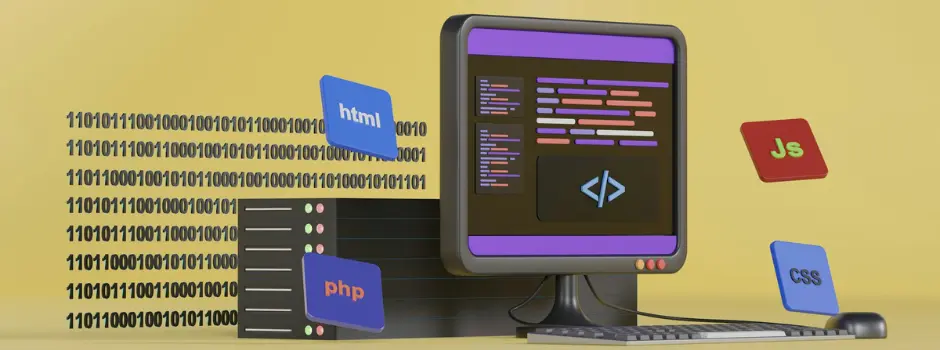
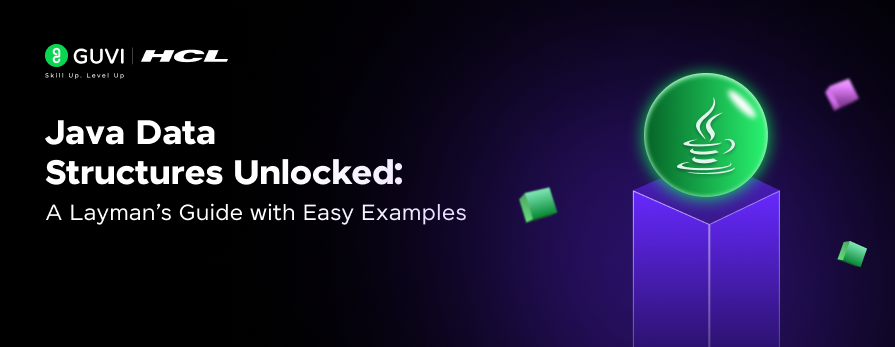
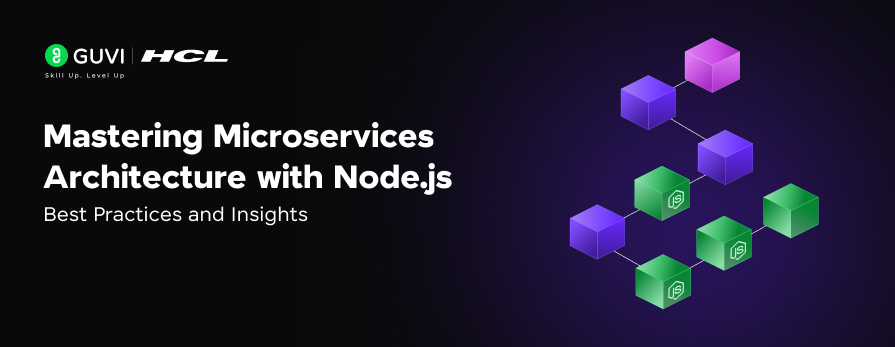
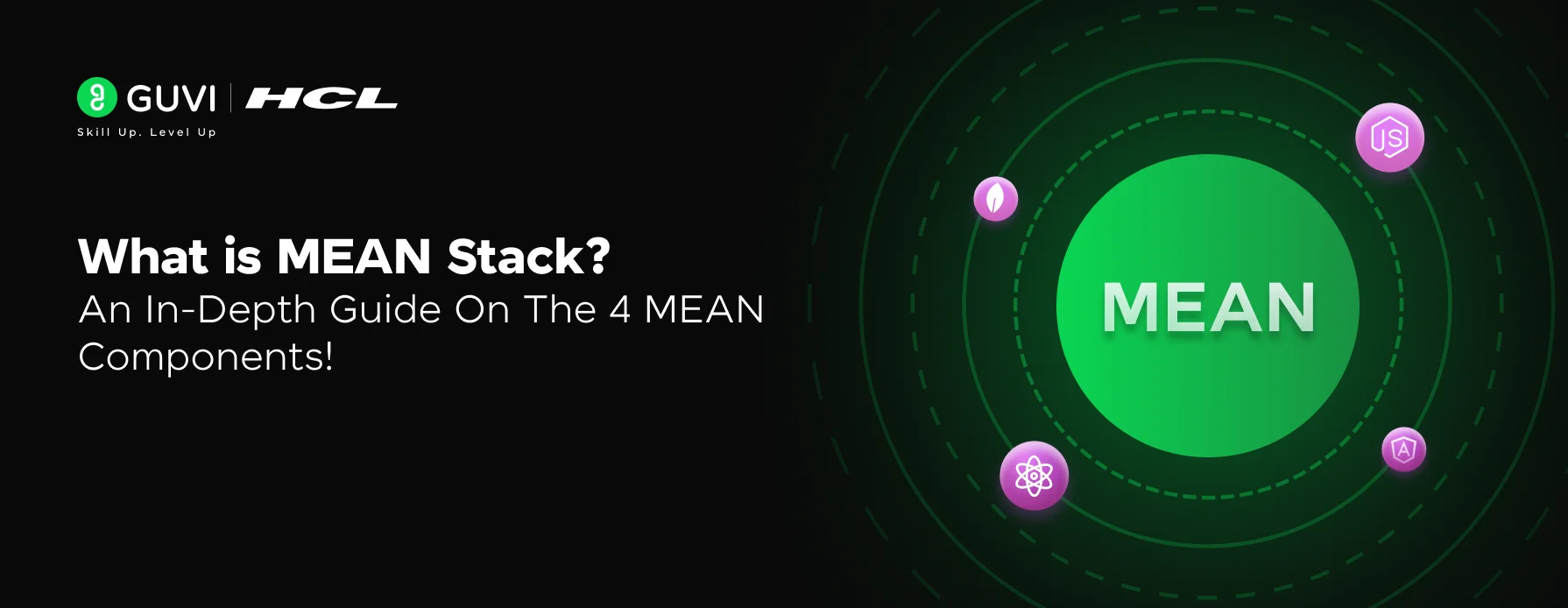



Did you enjoy this article?